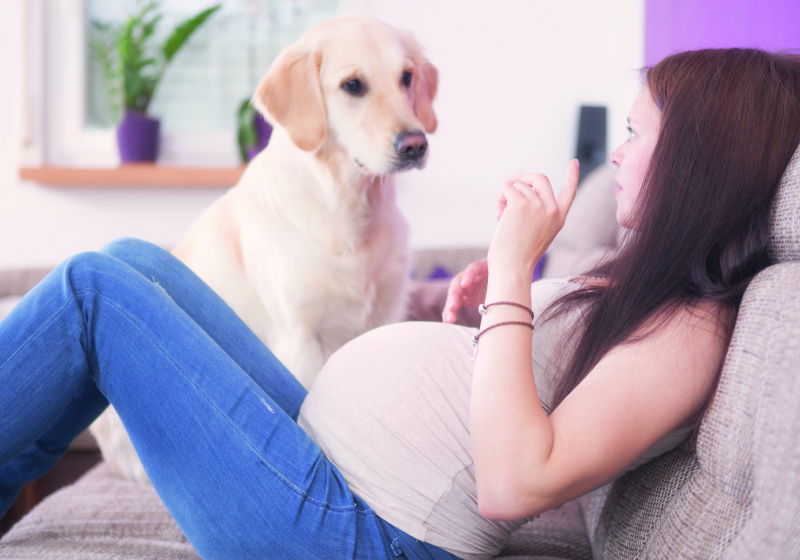This is part 2 of our Dogs and Sprogs feature. If you missed part 1 on how to prepare your dog for the arrival of a baby, you can read it here.
The new baby is home and you are probably too elated or too tired to think beyond the bundle of joy now at the centre of your world. However, spare a thought for your dog who up until now thought he was centre of the universe. Getting a handle on the pooch perspective around baby arrival, will not only help you juggle the weight of new, daily demands, but will also ease the transition for your pet.
Okay, so dogs don’t feel jealousy in the way humans do, but they are aware of losing something they value. Most dogs, selectively developed to be highly social, covet our attention above all. The usurped hound may react in surprising ways; barking, howling or sudden bouts of ‘naughtiness’. Changes can include outright disobedience; stealing forbidden items, and some dogs slump into a deep depression. No point getting angry, because as far as ‘bowser’ is concerned any attention is better than none.
Last time we looked at preparation; introducing your dog to the new baby’s smell and baby equipment, as well as sharpening up basic obedience. If you managed these, the following steps will be easier.
- Your dog is learning about your baby and new things can be scary. Dogs may nip, or worse, out of fear. They may be triggered by noises to view the baby as a toy or prey.
- Cases of dog on baby attacks invariably report the baby was left alone with the dog.
- Ensure the dog is always supervised around your baby. NEVER leave them alone, not even for a second.
- Don’t exclude the dog, only interacting with him when the baby is asleep. Do stuff with him and the baby together; build positive associations from the start.
- Here are simple games you can play to build the bond between dog and baby:
While you hold the baby, practise obedience commands with your dog. ‘Sit’, ‘down’, ‘touch’, whatever your dog knows. Give your dog rewards for compliance. This is a great, mental workout for pooch and a fabulous association with the new baby.
Play hide and seek. One of you holds the dog while mum and baby go into another room. Let the dog go saying ‘ find baby’, first letting him sniff an item of your baby’s used clothing. On locating mum and baby, your dog gets praise and a treat.
While holding or rocking the baby, have a small bag of kibble beside you. Toss out a kibble and wait until your dog eats it and comes back to you. Now wait for him to look at you and then throw out another bit. Repeat this, varying the duration of eye contact. Ask for ‘sits’ and ‘downs’ too.
- Obviously you cannot have your dog with you all the time. It is imperative he learns to switch off and relax in “safe” areas. Ensure your dog has great chews, stuffed Kongs or food packed bones, for these times.
- Chewing raises serotonin levels in dogs; get your dog in the mood to quietly chill by promoting a good chew habit.
- You’ll need time alone with the baby or to limit your dog’s access to baby. Use baby gates and tether stations to create safe areas for the dog to relax.
- Make these safe areas pleasant for the dog. Behind a gate or on a tether he can still see you and the baby. Toss him treats and give him chews to maintain those positive associations.
- Ensure your dog has some quality time with a walk and structured play, every day.
Next time- dogs, toddlers and older children.
Leonie St Clair, London Dogs Training
This article first appeared in the June 2015 issue of SE22 magazine


